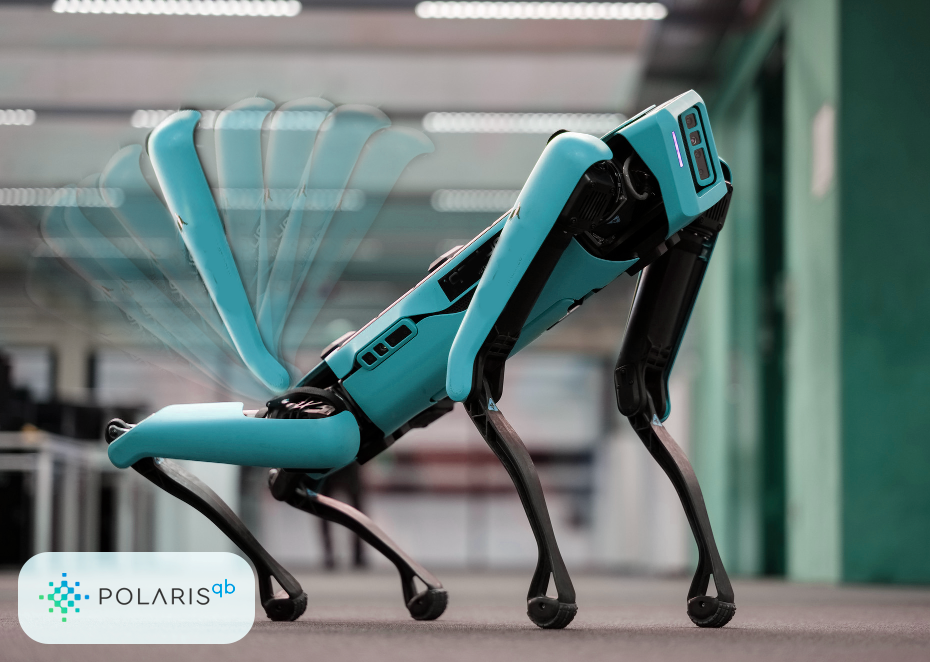
A happy robotic dog utilizes their new tail.
Today, April 1st, PolarisQB is announcing a groundbreaking development: its foray into the robotic veterinary world, leveraging its cutting-edge Quantum-Aided Drug Design (QuADD) platform. This move marks a significant expansion beyond more “traditional” pharmaceuticals.
The breakthrough involves the development of a revolutionary medicine tailored specifically for robotic dogs. Using QuADD's unparalleled computational power, PolarisQB sniffed out a medication capable of inducing tail growth in robotic canines. While robotic dogs have improved their ability to balance, this progress has been hindered by the lack of a tail. This achievement in medicine for robots has the potential to revolutionize the world of robotic dog agility such as jumping further and neutralizing threats with their powerful new tails, as well as improved communication skills.
CEO Shahar Keinan, PhD remarked “We are happy to announce that we have entered the veterinary space for robotic dogs with QuADD-Animatroni-Pharm. Not only have we solved the wagging tail issue, but we will continue to disrupt the robotic veterinary world with our forthcoming ear medicine for robot dogs.”
This bold step into the veterinary domain has been met with both excitement and skepticism within the scientific community. The cornerstone of this venture lies in PolarisQB's innovative use of QuADD to tackle previously unexplored trails of medical-robotic research. After an initial white paper released on a known antihistamine for the popular Furby pets of the 1990s, the company pursued several targets that could address conditions for other robotic pets.
While the concept of medicine for robots may sound like science fiction, PolarisQB assures the public that these advancements are not only feasible but also ethically sound. No live animals will be used during the testing of these medications. With rigorous testing and validation processes in place, the company remains committed to ensuring the safety and efficacy of its innovative veterinary solutions. CTO Bill Shipman says, “Worst case you get two tails. Maybe three, but definitely not five. We ruled out five using Lipinski. Tail orientation is accomplished during the final calculation of the quantum dihedral, determining the angle of wag through superposition. Furthermore, with great confidence, we can state none of the tails will be afflicted with the dreaded ‘Happy Tail Syndrome’”
As news of PolarisQB's venture spreads, enthusiasts eagerly anticipate the potential implications for the future of robotic veterinary medicine. Could this be the dawn of a new era? The company predicts that in a few short dog years, they may bring even more products for robots, who have been a neglected veterinary population since the birth of the field with the 1984 introduction of the Teddy Ruxpin animatronic companion robots.
In conclusion, Polaris Quantum Biotech's expansion into the robotic veterinary space represents a bold leap into the busy intersection of technology and robotic veterinary medicine. With PolarisQB leading the pack, the possibilities for innovation are limitless, shepherding a new era of scientific discovery and robo-canine advancement. Robotic canines will lift legs and mark April 1, 2024, as a historic day for all those animatronic companions that have become such an essential part of seemingly every American family’s life.
